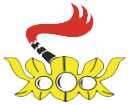Informasi Detil Paper |
|
| Judul: | Kekayaan dan Kepadatan Gastropoda Berdasarkan Tipe Pantai di Perairan Pantai Desa Suli dan Waai Kabupaten Maluku Tengah |
| Penulis: | Sriyanti Salmanu || email: info@mx.unpatti.ac.id |
| Jurnal: | Biopendix Vol. 1 no. 2 - hal. 108-112 Tahun 2015 [ KIP ] |
| Keywords: | Richness and density, gastropods, type of beach |
| Abstract: | Background: Type of coastal waters Suli village and village Waai is vegetated Beach, the beach is overgrown by vegetation beach. Coastal vegetation were found growing along the coastline is a mangrove and seagrass. Species richness index is a measure of the wealth of species that depend on the direct relationship between the logarithm of the number of species and area sampling. The population density of animals depends on the number of animals is regulated through intra- and interspecific relationships resulting directly from feedback density. Ecologically, seagrass perperan as a major manufacturer in the food chain. Methods: This study is a descriptive study was conducted using a survey. The variables to be studied is the richness and density of gastropods in the intertidal zone Suli village and village Waai Central Maluku district. Species richness index calculated by the formulation Margalef Results: wealth index gastropods in coastal waters Suli is 0.77 and the village Waai is 0.72. Means that the wealth index in both coastal waters bad. Gastropods to absolute density in coastal waters sebesar30,02 Suli village and gastropods to absolute density in coastal waters Waai village is 22.42. Michael revealed that the density of animal populations dependent through intra- and interspecific relationships resulting directly from feedback density. Conclusion: Wealth gastropods in coastal waters Suli village and village Waai categorized as bad as wealth index is less than 2.5, while the density of gastropods in coastal waters Suli village and village Waai are at a high level. This situation is caused by the type of vegetation seagrass gastropods which are Suli village gastopoda found as many as 13 types and villages Waai found 8 species and a number of individual lot. |
| File PDF: | Download fulltext PDF

|
| <<< Previous Record | Next Record >>> |
This is an Archive Website
For the New eJournal System
Visit OJS @ UNPATTI
AMANISAL (Perikanan & IK)
| Info
BUDIDAYA PERTANIAN (Pertanian)
| Info
CITA EKONOMIKA (Ekonomi)
| Info
EKOSAINS (Ekologi dan Sains)
| Info
Indonesian Journal of Chemical Research (MIPA)
| Info
JENDELA PENGETAHUAN (KIP)
| Info
MOLUCCA MEDICA (Kedokteran)
| Info
Pedagogika dan Dinamika Pendidikan (KIP)
| Info
TRITON (Perikanan & IK)
| Info
Prosiding Archipelago Engineering 2018
| Info
Prosiding Archipelago Engineering 2019
| Info
Akses dari IP Address 216.73.216.103
